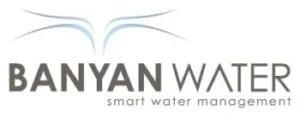LEED certification helps building managers to gain recognition, financial benefits, and press coverage for their efforts towards sustainability. The certification is overseen by the U.S. Green Building Council (USGBC) and is widely recognized as one of the premier green building certifications in the U.S. and the world. Getting a building LEED certified involves earning points in nine key LEED categories. Today, we’ll explore how various types of projects can earn LEED Water Efficiency credits.
In their overview of the Water Efficiency (WE) credit, the USGBC offers the following description:
The Water Efficiency (WE) section addresses water holistically, looking at indoor use, outdoor use, specialized uses, and metering. The section is based on an “efficiency first” approach to water conservation.
The USGBC is looking at a building’s water efficiency overall, encouraging not only water conservation, but also water quality protection, and the protection or restoration of water regimes and natural hydrological cycles. Depending on the type of building that you manage, up to 12 LEED Water Efficiency points are available, with possible additional points if water issues are considered a priority in your region.

Following are the areas that LEED takes into consideration and some basic information about each section*. Buildings must first fulfill certain prerequisites – basic levels of efficiency that USGBC expects for any green building (reasonably efficient fixtures and appliances, for example). Points are then awarded for water use efficiency over and above those prerequisites.
Indoor Water Use
Points related to indoor water use are allocated for efficiency in fixtures, appliances and processes. Examples of items that contribute to the indoor water use LEED credit: decreasing overall indoor water use beyond a given baseline, efficient cooling towers, effective metering (and therefore effective monitoring) of water systems.
Irrigation Water
Many facilities use significantly more water than they need outdoors. Banyan Water often sees properties where landscape health can easily be maintained with less than half of the irrigation water currently being used. Recognizing this, the USGBC has focused LEED credits for outdoor water use on intelligent ways to calculate and maintain reasonable levels of water use for irrigation.
Some of the methods that they endorse include:
- Creating landscapes that require no irrigation beyond the water that they need to become established
- Calculating reasonable “water budgets” for landscapes using the EPA’s WaterSense Water Budget Tool, and reducing use beyond the baseline that the EPA provides
- Metering outdoor water use and demonstrating significant reduction from an established baseline
The number of points available in each area and the level of importance of each of these efforts vary significantly depending on the type of building that you are trying to certify. An existing retail building, for example, may be able to earn Water Efficiency credits in a very different way than a new multifamily housing development.
The chart below summarizes Banyan Water’s research on the different water credits available for different types of buildings.

Share the knowledge – Use this code to embed in your site.
*Note that various types of buildings are eligible for different points in the LEED system. This overview does not cover all of the ways in which LEED WE credits can be earned. For more detailed information related to your project, visit usgbc.org/LEED.


